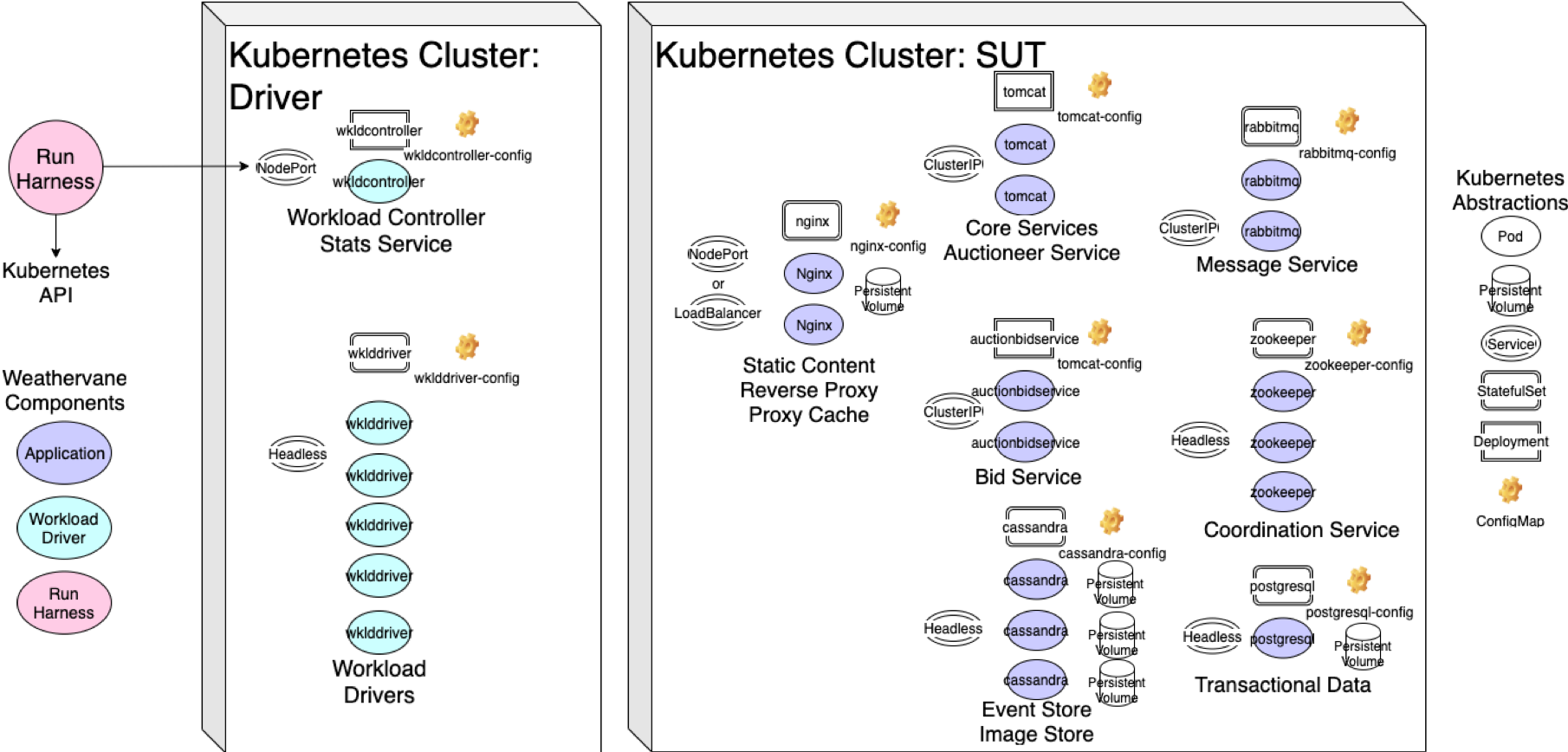vmware / Weathervane
Programming Languages
Overview
Weathervane 2.0 is an application-level performance benchmark which lets you investigate the performance characteristics of on-premise and cloud-based Kubernetes clusters.
Weathervane tests the performance capabilities of a Kubernetes cluster by deploying one or more applications on the cluster and then driving a load against those applications. The load is generated by the Weathervane workload driver, which also runs on a Kubernetes cluster. Weathervane can be configured to generate a steady load using a fixed number of simulated users, or to automatically vary the number of users to find the maximum number that can be supported on the cluster without violating quality-of-service (QoS) requirements.
When using a fixed load, Weathervane will give a pass/fail result which indicates whether the run completed without violating the QoS requirements. When using the maximum finding feature, the result will be the largest number of simulated users that could interact with the applications without violating the QoS requirements. This number is referred to as the peak WvUsers.
The application used by Weathervane is a multi-tier web application which includes both stateless and stateful services. You can select from multiple pre-tuned and tested configurations of this application. The configurations represent a range of deployment sizes. This allows you to select a configuration based on the size of the cluster under test, or based on the expected usage of the cluster. Weathervane 2.0.0 includes two configuration sizes, and larger configurations will be included in future releases.
Warning
You should exercise caution and good judgment about where you deploy Weathervane. Weathervane can place a significant load on system resources that can impact the performance of unrelated workloads. As a result Weathervane is not intended to be used in active production environments.
Previous Versions
Weathervane 1.x is still available on the 1.x branch.
Getting Started
You can get started with Weathervane 2.0 by following the instructions in the Quick Start Guide.
Documentation
The Weathervane User's Guide covers all aspects of setting up, deploying, and running the Weathervane benchmark.
Communicating about Weathervane
The Weathervane project team can be contacted in the following ways:
- Slack: This is the primary community channel. If you don't have an @vmware.com or @emc.com email, please sign up at https://code.vmware.com/web/code/join to get a Slack invite.
Feel free to contact us with questions or comments.
We also encourage the use of Issues in the GitHub repository for any questions or suggestions that may be of general interest. We may move discussion of questions or issues from Slack to a GitHub Issue if we feel that the question or answer may be of more general interest. Before creating an Issue, please read ISSUES.md.
Issues
The Weathervane project encourages liberal use of Issues for bugs, feature requests, documentation shortcoming, or general questions. Please read the issue guideline in ISSUES.md before filing an Issue. Be sure to follow the guidelines regarding issue labels to ensure a prompt response.
Releases & Major Branches
The branching and release strategy for Weathervane is discussed in BRANCHING.md.
Contributing
The Weathervane project team welcomes contributions from the community. Before you start working with Weathervane, please read our Developer Certificate of Origin. All contributions to this repository must be signed as described on that page. Your signature certifies that you wrote the patch or have the right to pass it on as an open-source patch. For more detailed information, refer to CONTRIBUTING.md.
License
Weathervane is available under the the BSD 2-clause License.


